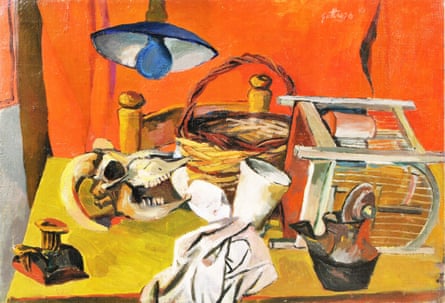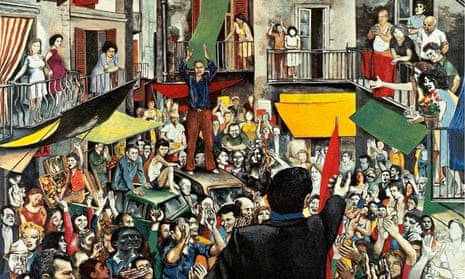Socialist realism is not exactly the most fashionable of art movements. The early avant garde art of the Soviet Union is widely celebrated; El Lissitzky’s red wedge is agreed to be cool. But when Stalin came to power and proclaimed the doctrine of realism, communist art stepped back and never recovered its vitality.
There’s a lot of willed historical ignorance in this mantra for slaughter that was already part of Soviet life when the Suprematists were painting their utopian dreams. Abstract propaganda was propaganda nonetheless. But what can be said in artistic defence of the realist hacks who were promoted by communism from the 1930s to the 1980s?
In the case of the Sicilian painter Renato Guttuso, quite a lot. Guttuso became a communist during the second world war, and fought in the resistance. His loyalty to the Italian Communist Party (PCI) never wavered: he was elected as a PCI member of the Italian senate twice in the 1970s. He became the party’s most approved and touted artist, because his art is so robustly realist.
Its political messages are not exactly subtle. Murdered partisans lie next to the red flag. A worker hews stone. A crowd of people gather in a small square to applaud the eloquent words of a communist orator, raising their fists, climbing on car roofs. This is 1975; it is a very benign view of Italian politics in the violent 1970s.
Yet the tumultuous crowd in Guttuso’s painting Neighbourhood Rally is full of unexpected faces. Marilyn Monroe is there. So are various faces from the art of Pablo Picasso, who himself appears on a balcony, fitting in with the crowd. The comic array of caricatures and quotations in this energetic painting has a dash of pop, like pepperoni added to realism’s doughy pizza.

Guttuso’s appetite for reality is, well, real. He has a true relish for the things of this world. It is no surprise that he illustrated Elizabeth David’s book Italian Food, for some of the loveliest things here are his pictures of watermelons and coffee pots and corn cobs in the sun. A butchered lamb is a more ambiguous image, at once rawly truthful and saturated with allegories of suffering as Christian as they are communist.
These paintings remind you that Guttuso painted at the time when Caravaggio was being rediscovered. Caravaggio’s fruit dishes are resurrected in his haunting 1940 painting Still Life With Fruit. He also plainly has a lot in common with neo-realist film-makers like Rossellini and Visconti for, after the fantasy culture of fascism was defeated, Italy craved the solid, the tangible: the real. Far from being sealed off in an ideological bubble, this art is expansive and comic and loves the life of modern Italy. In his big 1956-57 sketch People on a Street, Guttuso uses the license of art to mentally undress a young woman. This exhibition is full of the joys of communism, Italian-style.

Comments (…)
Sign in or create your Guardian account to join the discussion